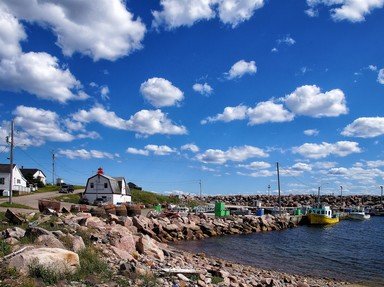Quiz Answer Key and Fun Facts
1. Who were the first known inhabitants of Nova Scotia?
2. Geographically speaking, Nova Scotia is a 580 kilometer long peninsula surrounded by four bodies of water, and connected to the province of New Brunswick by a small isthmus. Which of the following bodies of water does NOT surround Nova Scotia?
3. What European country was Nova Scotia named for?
4. Nova Scotia is comprised of four distinct geographical regions: Atlantic Coast, Bay of Fundy/Annapolis Valley, Northumberland Shore, and Scottish Highlands of Cape Breton. In which region would you find Halifax, the capital city?
5. Nova Scotia's Canso Causeway connects Cape Breton Island to the rest of mainland Nova Scotia. It is the world's _________ causeway.
6. Nova Scotia is home to Canada's oldest African-Canadian community.
7. Over 80 percent of Nova Scotia's population trace their ancestry either wholly or partly to the United Kingdom. Those with which origin rank second?
8. Where does Nova Scotia rank in size compared to other Canadian provinces and territories?
9. Nova Scotia could well be called "Land of Many Lakes". How many lakes are found in Nova Scotia?
10. The Bay of Fundy is located between Nova Scotia and New Brunswick. What is this bay's 'claim to fame'?
11. Halifax is the capital city of Nova Scotia. The Halifax Regional Municipality (HRM) is comprised of Halifax, Dartmouth, Bedford and Halifax County. It has an population of less than half a million. Which of the following is true of Halifax?
12. What would you call a resident of Halifax?
13. In December of 1917, something devastating took place in Halifax nearly destroying the city. What happened?
14. Nova Scotians have been proudly referred to as "Bluenosers" since the 1700s. Why were they called this?
15. The Bluenose II Schooner represents Nova Scotia as a sailing good-will ambassador around the world. Unlike the original Bluenose, she does not race. Bluenose II was launched in July, 1963. The Bluenose appears on what Canadian coin?
Source: Author
Ballykissangel
This quiz was reviewed by FunTrivia editor
minch before going online.
Any errors found in FunTrivia content are routinely corrected through our feedback system.

